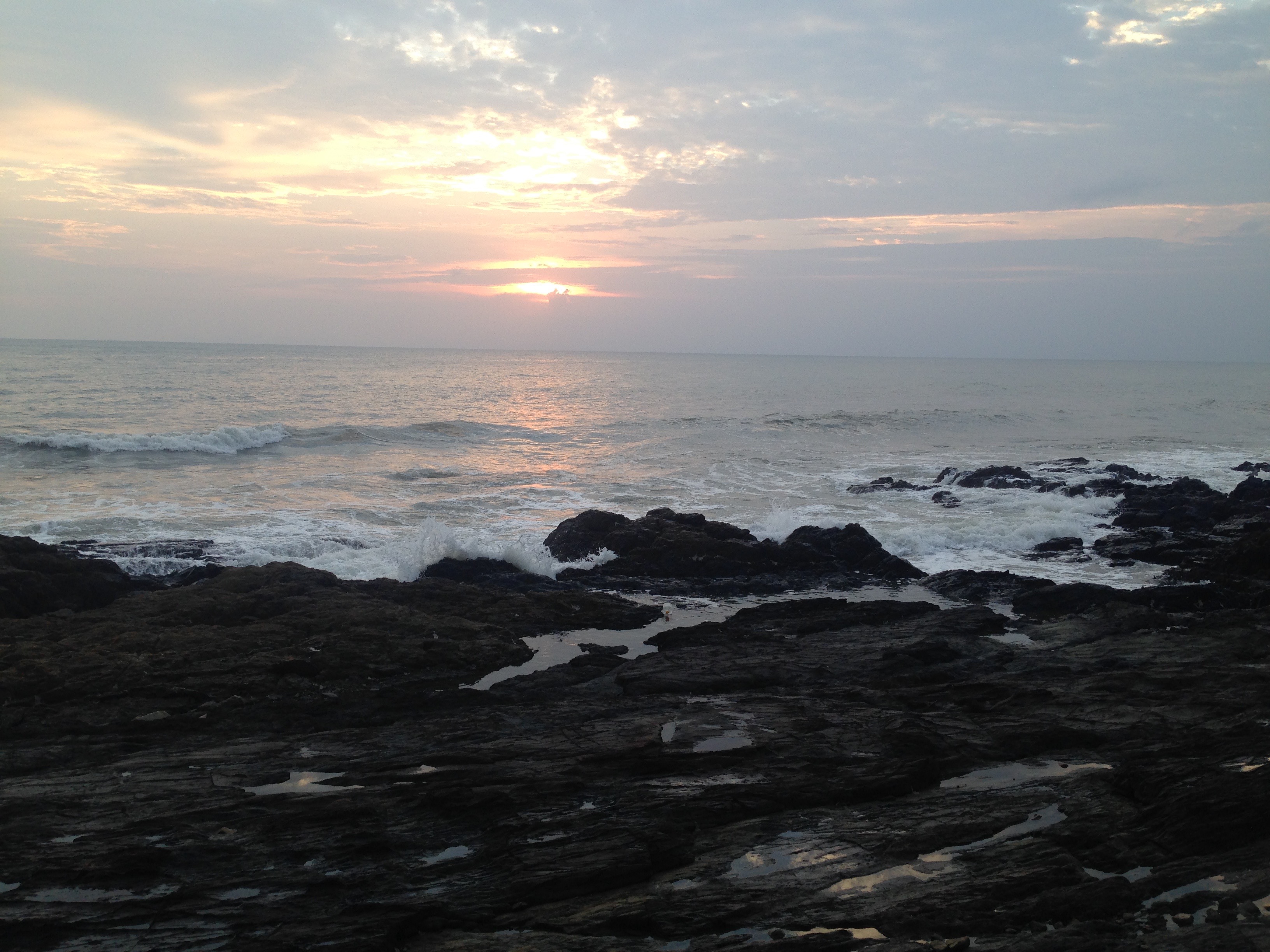กระบี่: รณรงค์การเป็นมิตรต่อสิ่งแวดล้อม
ความเป็นมา ในปัจจุบัน การผลิตไฟฟ้าของประเทศไทยส่วนใหญ่ประมาณร้อยละ 68 ผลิตโดยก๊าซธรรมชาติ ร้อยละ 9 จากโรงไฟฟ้าถ่านหิน และส่วนที่เหลือจากเชื้อเพลิงฟอสซิลอื่น ๆ และพลังงานหมุนเวียน นับเป็นความสำเร็จของประเทศไทยที่ปรับเปลี่ยนจากการพึ่งพาเชื้อเพลิงฟอสซิลเป็นอย่างมากในช่วงสองทศวรรษตั้งแต่ปี พ.ศ. 2523 เป็นต้นมา เนื่องจากอัตราการเติบโตโดยเฉลี่ยของการใช้พลังงานร้อยละ 3 ต่อปี ส่งผลให้แผนพัฒนาการผลิตไฟฟ้าที่ปรับปรุงใหม่สำหรับปี พ.ศ. 2555-2573 มีวัตถุประสงค์เพื่อลดการใช้ก๊าซธรรมชาติให้เหลือร้อยละ 58 ภายในสิ้นปี พ.ศ. 2573 และเพิ่มการใช้พลังงานหมุนเวียน (ทั้งจากไฟฟ้าพลังน้ำจากเขื่อนและไฟฟ้าพลังงานแสงอาทิตย์) ให้เป็นร้อยละ 25 ภายในสิ้นปี พ.ศ. 2573 แผนพัฒนาการผลิตไฟฟ้าระบุความต้องการผลิตไฟฟ้าจำนวน 4,400 เมกะวัตต์ จากโรงงานถ่านหินคุณภาพสูงภายในปี พ.ศ.2573 ซึ่งเป็นอัตราที่เพิ่มขึ้นจากร้อยละ 9 เป็นร้อยละ 12 ของโรงไฟฟ้าถ่านหิน การไฟฟ้าฝ่ายผลิตแห่งประเทศไทย (กฟผ.) ยืนยันว่าจะสร้างโรงไฟฟ้าถ่านหินเพิ่มขึ้น เนื่องจากแหล่งก๊าซธรรมชาติจากพม่าในอนาคตมีความไม่แน่นอน และปัญหาคอขวดของพลังงานหมุนเวียน เช่น โรงไฟฟ้าพลังน้ำ และพลังงานแสงอาทิตย์ มีกำลังการผลิตที่ไม่แน่นอน ปฏิบัติได้หากไม่ใช่เชิงอุสาหกรรมพาณิชย์ และมีการลงทุนสูงที่มา: แผนพัฒนากําลังผลิตไฟฟ้าของประเทศไทย พ.ศ. […]
ความเป็นมา
ในปัจจุบัน การผลิตไฟฟ้าของประเทศไทยส่วนใหญ่ประมาณร้อยละ 68 ผลิตโดยก๊าซธรรมชาติ ร้อยละ 9 จากโรงไฟฟ้าถ่านหิน และส่วนที่เหลือจากเชื้อเพลิงฟอสซิลอื่น ๆ และพลังงานหมุนเวียน นับเป็นความสำเร็จของประเทศไทยที่ปรับเปลี่ยนจากการพึ่งพาเชื้อเพลิงฟอสซิลเป็นอย่างมากในช่วงสองทศวรรษตั้งแต่ปี พ.ศ. 2523 เป็นต้นมา เนื่องจากอัตราการเติบโตโดยเฉลี่ยของการใช้พลังงานร้อยละ 3 ต่อปี ส่งผลให้แผนพัฒนาการผลิตไฟฟ้าที่ปรับปรุงใหม่สำหรับปี พ.ศ. 2555-2573 มีวัตถุประสงค์เพื่อลดการใช้ก๊าซธรรมชาติให้เหลือร้อยละ 58 ภายในสิ้นปี พ.ศ. 2573 และเพิ่มการใช้พลังงานหมุนเวียน (ทั้งจากไฟฟ้าพลังน้ำจากเขื่อนและไฟฟ้าพลังงานแสงอาทิตย์) ให้เป็นร้อยละ 25 ภายในสิ้นปี พ.ศ. 2573 แผนพัฒนาการผลิตไฟฟ้าระบุความต้องการผลิตไฟฟ้าจำนวน 4,400 เมกะวัตต์ จากโรงงานถ่านหินคุณภาพสูงภายในปี พ.ศ.2573 ซึ่งเป็นอัตราที่เพิ่มขึ้นจากร้อยละ 9 เป็นร้อยละ 12 ของโรงไฟฟ้าถ่านหิน การไฟฟ้าฝ่ายผลิตแห่งประเทศไทย (กฟผ.) ยืนยันว่าจะสร้างโรงไฟฟ้าถ่านหินเพิ่มขึ้น1 เนื่องจากแหล่งก๊าซธรรมชาติจากพม่าในอนาคตมีความไม่แน่นอน และปัญหาคอขวดของพลังงานหมุนเวียน เช่น โรงไฟฟ้าพลังน้ำ และพลังงานแสงอาทิตย์ มีกำลังการผลิตที่ไม่แน่นอน ปฏิบัติได้หากไม่ใช่เชิงอุสาหกรรมพาณิชย์ และมีการลงทุนสูง
ตารางที่ 1 แหล่งพลังงานในปี พ.ศ. 2557
ประเภทเชื้อเพลิง
ณ ปี 2557 ร้อยละ ณ ปี 2569 เป้าหมายร้อยละ ณ ปี 2579 เป้าหมายร้อยละ
นำเข้าไฟฟ้าจากประเทศเพื่อนบ้านโดยผลิตจากโรงไฟฟ้าพลังน้ำ
ถ่านหินสะอาด
พลังงานหมุนเวียน
ก๊าซธรรมชาติ
นิวเคลียร์
ดีเซล
ที่มา: แผนพัฒนากําลังผลิตไฟฟ้าของประเทศไทย พ.ศ. 2558-2579 (PDP2015)2
การไฟฟ้าฝ่ายผลิตแห่งประเทศไทยริเริ่มโรงไฟฟ้าถ่านหินเหนือคลองจังหวัดกระบี่ด้วยกำลังการผลิต 870 เมกะวัตต์ในขณะที่จะสร้างท่าเรือถ่านหินบ้านคลองรั้วเพื่อขนส่งถ่านหินนำเข้าจากอินโดนีเซีย ออสเตรเลีย และแอฟริกาไปยังโรงไฟฟ้าถ่านหิน จากรายงานปี พ.ศ.2557 ของกรีนพีซเรื่อง กระบี่บนทางแพร่ง: ถ่านหินสกปรก หรือ ระบบพลังงานหมุนเวียนที่สะอาด3 ระบุว่าการขนถ่ายถ่านหินในทะเลเกิดขึ้นตลอดทั้งปีรวมถึงฤดูมรสุม จะลำเลียงจากเรือขนาดใหญ่ไปยังเรือที่เล็กกว่าบริเวณทะเลรอบเกาะลันตาซึ่งเป็นแหล่งท่องเที่ยวหลักของภาคใต้ และที่ท่าเรือบ้านคลองรั้วจะลำเลียงถ่านหินไปยังโรงไฟฟ้าผ่านสายพานลำเลียงยาว 8.4 กิโลเมตร โดยคาดว่าโรงไฟฟ้าจะแล้วเสร็จในปี พ.ศ.2562
ปี พ.ศ. 2544 กระบี่เป็นที่รู้จักในฐานะเป็นพื้นที่ความหลากหลายทางชีวภาพทางทะเลระดับโลก และพื้นที่ชุ่มน้ำสำคัญระดับสากลหรือแรมซาร์ไซต์ โดยมีปลามากกว่า 200 สายพันธุ์ และปะการังมากกว่า 80 ชนิด บนพื้นที่ 21,300 เฮกตาร์ของปากแม่น้ำกระบี่ประกอบด้วยโคลน หาดทราย และคลองหน้าเมืองกระบี่ รวมถึงป่าโกงกางและพื้นที่หญ้าทะเลบริเวณเกาะศรีบอยา
โรงงานไฟฟ้าถ่านหินกระบี่แห่งใหม่จะถูกสร้างขึ้นภายในระบบนิเวศหญ้าทะเลที่ใหญ่ที่สุดของประเทศไทยและใกล้กับชายหาดดั้งเดิมของทะเลอันดามันซึ่งเป็นแหล่งท่องเที่ยวที่มีชื่อเสียงระดับโลก การก่อสร้างโรงงานไฟฟ้าถ่านหินกระบี่และท่าเรือขนถ่ายถ่านหินแห่งใหม่จะส่งผลกระทบโดยตรงต่อเศรษฐกิจหลักของจังหวัดโดยเฉพาะอุตสาหกรรมการท่องเที่ยวและประมง ซึ่งกระบี่มีนักท่องเที่ยวประมาณ 2.3 ล้านคนต่อปี ในปี พ.ศ. 2558 รายได้จากการท่องเที่ยวของกระบี่สูงเป็นอันดับที่ห้าของประเทศ มีมูลค่า 2,219 ล้านเหรียญสหรัฐ4 รายได้จากกิจกรรมนันทนาการและการท่องเที่ยวในพื้นที่ชุ่มน้ำบริเวณปากแม่น้ำกระบี่ประมาณ 9.7 ล้านเหรียญสหรัฐต่อปี และมูลค่าทางเศรษฐกิจของป่าชายเลนประมาณ 758 เหรียญสหรัฐ/เฮกตาร์5,6

ชายฝั่งเกาะลันตา จ.กระบี่. ภาพถ่ายโดย: จุฑาทิพย์ มณีพงศ์ ใบอนุญาต: CC-BY-SA-4.0.
การสนับสนุนขององค์กรภาคประชาสังคมและการตอบสนองของภาครัฐ
เครือข่ายภาคธุรกิจท้องถิ่น ชุมชน และองค์กรพัฒนาเอกชนในจังหวัดกระบี่และใกล้เคียงรวมตัวกันต่อต้านการสร้างโรงไฟฟ้าถ่านหินแห่งใหม่ ด้วยความกังวลเกี่ยวกับผลกระทบที่มีต่อความเป็นอยู่ อาชีพ รายได้และ ความสมบูรณ์ของทรัพยากรทางทะเล รวมถึงรายได้จากการท่องเที่ยว เครือข่ายภาคธุรกิจท้องถิ่นประกาศ
“แถลงการณ์ภาคีภาคเอกชนจังหวัดกระบี่ว่าด้วยการแก้ปัญหาพลังงานเพื่อสนองต่อวิสัยทัศน์ของจังหวัดกระบี่ในปี พ.ศ. 2563 – กระบี่เป็นมิตรต่อสิ่งแวดล้อม” พวกเขาไม่สนับสนุนการใช้วัตถุดิบสำหรับการผลิตพลังงานที่ก่อให้เกิดการปนเปื้อนสารพิษหรือนำไปสู่การเปลี่ยนแปลงสภาพแวดล้อมทางธรรมชาติ เช่น โรงไฟฟ้าพลังงานถ่านหินและโรงไฟฟ้าพลังงานนิวเคลียร์ พวกเขาสนับสนุนการใช้พลังงานหมุนเวียนที่สะอาดเพื่อการพัฒนาเศรษฐกิจอย่างยั่งยืนของจังหวัดกระบี่ เช่น อุตสาหกรรมที่ไร้ขยะ ผลิตผลที่ได้จากก๊าซชีวภาพ พลังงานลม และพลังงานแสงอาทิตย์ และระบบโครงข่ายไฟฟ้าเพื่ออำนวยความสะดวกในการผลิตกระแสไฟฟ้าจากพลังงานหมุนเวียนและส่งเสริมการใช้ไฟฟ้าในโรงแรมและวิสาหกิจอื่น ๆ อย่างยั่งยืน7,8,9
ในเดือนกุมภาพันธ์ 2560 หลังจากที่คณะกรรมการนโยบายพลังงานแห่งชาติเปิดเผยการอนุมัติโครงการโรงไฟฟ้าถ่านหินแห่งใหม่ ผู้ชุมนุมหลายร้อยคนจากจังหวัดกระบี่ได้เข้ามานั่งประท้วงในบริเวณหน้าอาคารสำนักงานนายกรัฐมนตรี หลังจากการประท้วงผ่านไปสองวัน คณะรัฐมนตรีได้ตกลงให้ยุติการประเมินผลกระทบทางสิ่งแวดล้อมและสุขภาพของโรงไฟฟ้าถ่านหินและการประเมินผลกระทบทางสิ่งแวดล้อมของท่าเรือเพื่อการขนส่งถ่านหิน รัฐบาลยังสัญญาว่าจะเปิดเผยรายงานที่มีรายละเอียดผลกระทบของโครงการอุตสาหกรรมต่างๆ โดยแกนนำการเคลื่อนไหวของจังหวัดกระบี่เน้นย้ำว่าการประท้วงของพวกเขาไม่ได้เกิดขึ้นเพียงเพื่อจังหวัดกระบี่เท่านั้น แต่ยังเป็นการรณรงค์ให้เกิดการลงทุนด้านพลังงานสะอาดของประเทศไทย10
ในเดือนกันยายน 2560 สมาคมธุรกิจการท่องเที่ยวเกาะลันตาจังหวัดกระบี่โดยความช่วยเหลือทางด้านวิชาการจากนักวิชาการของมหาวิทยาลัยวลัยลักษณ์ได้ทำการสำรวจนักท่องเที่ยวจำนวนทั้งสิ้น 1,129 คนจาก 30 ประเทศ การสำรวจพบว่าร้อยละ 90 ของผู้ตอบแบบสอบถามจะไม่กลับไปที่เกาะลันตาอีก หากมีการพัฒนาโรงไฟฟ้าถ่านหินแห่งใหม่ตามที่มีการเสนอ ดังนั้น เครือข่ายธุรกิจของจังหวัดกระบี่จึงยืนยันขอให้กระทรวงพลังงานระงับการพัฒนาโรงไฟฟ้าแห่งนี้11,12,13,14
กระบี่มุ่งสู่การเป็นมิตรต่อสิ่งแวดล้อม
ตามข้อตกลงระดับท้องถิ่นและระดับจังหวัด ทุกภาคส่วนของงานพัฒนาจังหวัดกระบี่ซึ่งประกอบด้วยภาครัฐ
ภาคเอกชน ชุมชนและภาคส่วนอื่น ๆ ได้ร่วมกำหนดยุทธศาสตร์จังหวัดสู่ “กระบี่เป็นมิตรต่อสิ่งแวดล้อม” ภายใต้นโยบายกระบี่เมืองระดับโลก ที่นำโดยผู้ว่าราชการจังหวัดกระบี่ ยุทธศาสตร์จังหวัดกระบี่ ว่าด้วยเรื่อง
- พัฒนาการท่องเที่ยวให้เป็นการท่องเที่ยวสีเขียว (Green Tourism) และเพิ่มศักยภาพให้ได้มาตรฐานในระดับสากล
- ยกระดับขีดความสามารถในการผลิตด้านการเกษตรและแปรรูปสินค้าเกษตรอย่างครบวงจร ควบคู่กับการพัฒนาอุตสาหกรรมสะอาดและพลังงานทางเลือก
- สร้างเสริมคุณภาพชีวิตประชาชนสู่สังคมน่าอยู่ และปรับตัวรองรับกระแสการเปลี่ยนแปลง
- อนุรักษ์และฟื้นฟูทรัพยากรธรรมชาติและสิ่งแวดล้อมอย่างยั่งยืน
ในปี พ.ศ. 2559 นายพินิจ บุญเลิศ ผู้ว่าราชการจังหวัดกระบี่ประกาศ แนวคิด 7 ประการเพื่อการท่องเที่ยวที่ยั่งยืน (7 Greens) ของจังหวัดกระบี่ภายใต้แผนงานกระบี่เมืองระดับโลก เน้นการท่องเที่ยวที่ยั่งยืนควบคู่ไปกับการพัฒนาการเกษตรและอุตสาหกรรม เพราะทุกภาคส่วนในจังหวัดกระบี่กังวลเรื่องผลกระทบต่อทรัพยากรธรรมชาติและผลประโยชน์ของท้องถิ่น ดังนั้น จึงเลือกความยั่งยืนเป็นยุทธศาสตร์การพัฒนา
ตั้งแต่ปี พ.ศ. 2559 คณะกรรมการพัฒนาจังหวัดมีการประชุมอย่างสม่ำเสมอเพื่อจัดทำความยั่งยืนและการเคลื่อนไหวที่เป็นมิตรต่อสิ่งแวดล้อมของโครงการและแผนงานของแต่ละหน่วยงานราชการ เช่น ปีงบประมาณของสำนักงานทรัพยากรธรรมชาติและสิ่งแวดล้อมจังหวัดกระบี่ เช่น ปีงบประมาณ พ.ศ. 2560 เป็นต้น เพื่อเพิ่มพูนผลการดำเนินงานตามยุทธศาสตร์กระบี่เป็นมิตรต่อสิ่งแวดล้อม15,16 ในปี พ.ศ. 2560 องค์การบริหารส่วนจังหวัดกระบี่ใช้ไฟส่องถนนจากพลังงานแสงอาทิตย์เป็นระยะทาง 1.5 กม. และใช้กังหันลมผลิตไฟฟ้าจากเซลล์แสงอาทิตย์ตามถนนเลียบชายฝั่ง17
นอกจากนี้ ภาคเอกชนในท้องถิ่นได้ริเริ่มการจัดตั้งเซลล์แสงอาทิตย์ขนาด 4,800 วัตต์ในซูเปอร์มาร์ทบนเกาะลันตาของจังหวัดกระบี่ การติดตั้งเซลล์แสงอาทิตย์นี้สามารถลดการใช้ไฟฟ้าจาก 3,636 เหรียญสหรัฐ เป็น 2,121 เหรียญสหรัฐ ด้วยระยะเวลาการคืนทุนเป้าหมายภายใน 5-6 ปี แนวคิดริเริ่มอื่น ๆ อาทิเช่น ระบบพลังงานชีวมวล 1 เมกะวัตต์ และก๊าซชีวภาพ 3.2 เมกะวัตต์ของน้ำมันปาล์มไทย–อินโด จังหวัดกระบี่ สำหรับใช้ภายในโรงงาน และขายจำนวน 1 เมกะวัตต์ไปยังระบบสายส่งไฟฟ้าแห่งชาติ18
การเชื่อมโยงสู่เป้าหมายการพัฒนาที่ยั่งยืน
ในบรรดาเป้าหมายการพัฒนาอย่างยั่งยืนทั้งหมด 17 ข้อ ที่รัฐบาลไทยมุ่งมั่นให้เป็นยุทธศาสตร์ระดับชาติและสอดคล้องกับการดำเนินงานของชุมชนระหว่างประเทศ เป้าหมายการพัฒนาอย่างยั่งยืนที่ 7 โดดเด่นด้วยเป้าหมายสำหรับพลังงานที่ราคาไม่แพง เชื่อถือได้ ยั่งยืน และทันสมัยสำหรับทุกคน และเป้าหมายการพัฒนาอย่างยั่งยิืนที่ 13 เรียกร้องให้มีการดำเนินการอย่างเร่งด่วนเพื่อต่อสู้กับการเปลี่ยนแปลงสภาพภูมิอากาศและผลกระทบที่จะเกิดขึ้น แผนพัฒนากำลังการผลิตไฟฟ้าที่ปรับปรุงใหม่ปี พ.ศ. 2555-2573 ระบุให้เพิ่มกำลังการผลิตของโรงไฟฟ้าถ่านหินจากร้อยละ 9 เป็นร้อยละ 12 และโรงไฟฟ้าถ่านหินที่เสนอใหม่ในจังหวัดกระบี่ไม่สามารถบรรลุเป้าหมายดังกล่าวได้ ถ่านหินไม่ใช่แหล่งพลังงานหมุนเวียนจึงไม่มีความยั่งยืน
กรีนพีซ ประเทศไทย ระบุว่าโรงไฟฟ้าถ่านหินที่เสนอให้สร้างใหม่ในจังหวัดกระบี่จะผลิตก๊าซคาร์บอนไดออกไซด์สูงถึง 18 ล้านตันต่อปี ทำให้ปล่อยปล่อยก๊าซเรือนกระจกจำนวนมากที่ส่งผลกระทบต่อการเปลี่ยนแปลงสภาพภูมิอากาศ แม้ว่าการดำเนินงานของเป้าหมายการพัฒนาอย่างยั่งยืนจะไม่ผูกพันทางกฎหมาย และควรลงมือปฏิบัติในท้องถิ่นตามความต้องการของแต่ละประเทศ แต่นโยบายและการดำเนินการที่ขัดแย้งกันของเป้าหมายการพัฒนาอย่างยั่งยืนที่ 7 และเป้าหมายการพัฒนาอย่างยั่งยืนที่ 13 จะสั่นคลอนรากฐานของหลักการสากลเกี่ยวกับเชื้อเพลิงที่สะอาดและยั่งยืน และเป็นอันตรายต่ออนาคตของการพัฒนาอย่างยั่งยืนในประเทศไทย19
นอกจากนี้ เครือข่ายกระบี่ที่เป็นมิตรต่อสิ่งแวดล้อมและเครือข่ายอันดามันที่เป็นมิตรต่อสิ่งแวดล้อมโดยการสนับสนุนของกรีนพีซประเทศไทย ได้ศึกษาการใช้พลังงานไฟฟ้าและแผนการผลิตไฟฟ้าในจังหวัดกระบี่ในช่วง 20 ปีข้างหน้า (พ.ศ. 2561-2580) เพื่อพิสูจน์ความเป็นไปได้ที่จังหวัดกระบี่จะสร้างระบบจ่ายไฟฟ้าที่ได้มาจากพลังงานหมุนเวียนอย่างสมบูรณ์ การศึกษาคาดว่าศักยภาพการผลิตไฟฟ้ารวมทั้งสิ้น 1,676 เมกะวัตต์จาก 5 แหล่งหลักของพลังงานหมุนเวียน ได้แก่ ชีวมวลสมัยใหม่ ก๊าซชีวภาพ พลังงานแสงอาทิตย์ พลังงานลม และพลังงานน้ำขนาดเล็ก20จากการจำลองการผลิตไฟฟ้าเป็นเวลาหนึ่งชั่วโมง ในปี พ.ศ. 2569 กระบี่จะสามารถบรรลุเป้าหมายการใช้พลังงานหมุนเวียนได้เต็ม 100%
บทความที่เกี่ยวข้อง:
References
- 1. บางกอกโพสต์. 24 พฤศจิกายน 2557. Egat says more coal-fired power plants needed. เข้าถึงเมื่อกรกฎาคม 2561.
- 2. สำนักงานนโยบายและแผนพลังงาน. กระทรวงพลังงาน. 2558. แผนพัฒนากําลังผลิตไฟฟ้าของประเทศไทย พ.ศ. 2558-2579. เข้าถึงเมื่อกรกฎาคม 2561.
- 3. Higonnet, E. et al. Greenpeace Southeast Asia. 2014. กระบี่บนทางแพร่ง: ถ่านหินสกปรก หรือ ระบบพลังงานหมุนเวียนที่สะอาด. เข้าถึงเมื่อกรกฎาคม 2561.
- 4. เดอะไทยเกอร์. 7 มีนาคม 2561. 21 องค์กรภาคเอกชนส่งจดหมายเปิดผนึกถึงรัฐมนตรีว่าการกระทรวงพลังงาน เพื่อยุติโรงไฟฟ้าถ่านหิน. เข้าถึงเมื่อสิงหาคม 2561.
- 5. อ้างแล้ว. เข้าถึงเมื่อกรกฎาคม 2561.
- 6. กรีนโกลบอลทราเวล. เข้าถึงเมื่อสิงหาคม 2561. เข้าถึงเมื่อสิงหาคม 2561.
- 7. เครือข่ายถ่านหินประเทศไทย. เข้าถึงเมื่อสิงหาคม 2561.
- 8. สัมผัสแห่งกระบี่. เข้าถึงเมื่อสิงหาคม 2561.
- 9. อ้างแล้ว. เข้าถึงเมื่อกรกฎาคม 2561.
- 10. ประชาไท. 21 กุมภาพันธ์ 2560. ชาวบ้านได้รับชัยชนะจากโรงไฟฟ้าถ่านหิน (ตอนนี้). เข้าถึงเมื่อกรกฎาคม 2561.
- 11. อ้างแล้ว. เข้าถึงเมื่อสิงหาคม 2561.
- 12. Alt Thai News. 19 กุมภาพันธ์ 2560. Showdown Over Krabi Coal Power Plant. เข้าถึงเมื่อสิงหาคม 2561.
- 13. บางกอกโพสต์. 20 กุมภาพันธ์ 2561. Anti-coal power plant rally ends after talks. เข้าถึงเมื่อมิถุนายน 2562.
- 14. เดอะเนชั่น. 13 ธันวาคม 2561. Thailand step away from coals. เข้าถึงเมื่อมิถุนายน 2562.
- 15. สำนักงานทรัพยากรธรรมชาติและสิ่งแวดล้อมจังหวัดกระบี่. 25 กรกฎาคม 2560. ข่าวเด่น: Krabi Goes Green. เข้าถึงกรกฎาคม 2561.
- 16. สำนักงานทรัพยากรธรรมชาติและสิ่งแวดล้อมจังหวัดกระบี่. 2 สิงหาคม 2560. จัดประชุมขับเคลื่อนยุทธศาสตร์กระบี่สีเขียว Krabi Goes Green ภายใต้นโยบาย Krabi Globle City มิติหัวใจสีเขียว: Green Heart. เข้าถึงกรกฎาคม 2561.
- 17. มติชนออนไลน์. 17 มิถุนายน 2560. กระบี่ทุ่มงบติดไฟถนนระบบโซลาร์เซลล์-กังหันลม ตั้งเป้าใช้พลังงานหมุนเวียน 100%. เข้าถึงกรกฎาคม 2561.
- 18. ชาลี เจริญลาภนพรัตน์และคณะ. กรีนพีซ. 2561. Krabi Goes Green: สู่เมืองต้นแบบ พลังงานหมุนเวียนเกินร้อย. เข้าถึงเมื่อสิงหาคม 2561.
- 19. ปรัชญ์ รุจิวนารมย์. เดอะเนชั่น. 2560. การเน้นพึ่งพาถ่านหินของไทยมีผลกระทบระดับโลก. เข้าถึงเมื่อกรกฎาคม 2561.
- 20. ชาลี เจริญลาภนพรัตน์และคณะ. กรีนพีซ. 2561. Krabi Goes Green: สู่เมืองต้นแบบ พลังงานหมุนเวียนเกินร้อย. เข้าถึงเมื่อสิงหาคม 2561.

